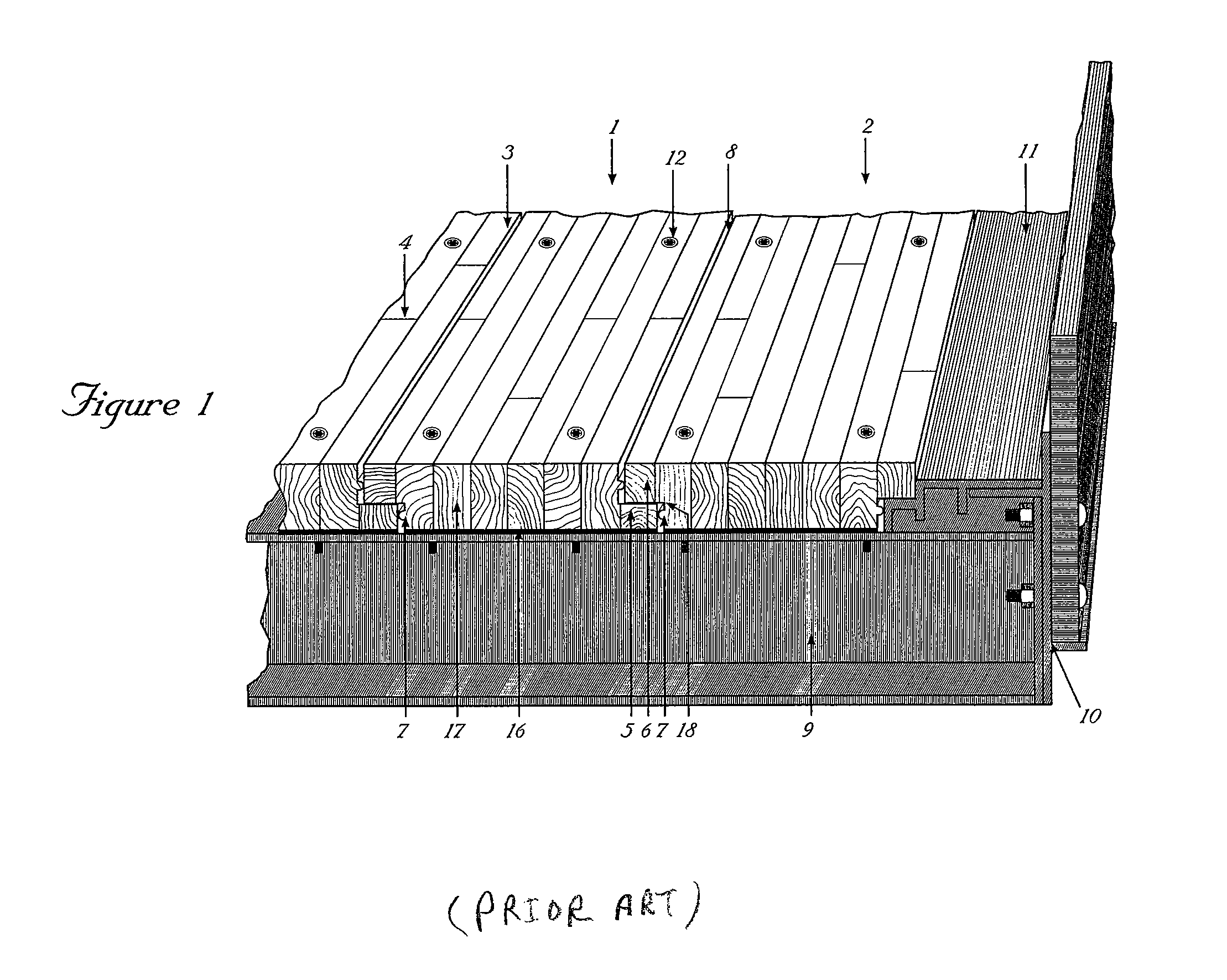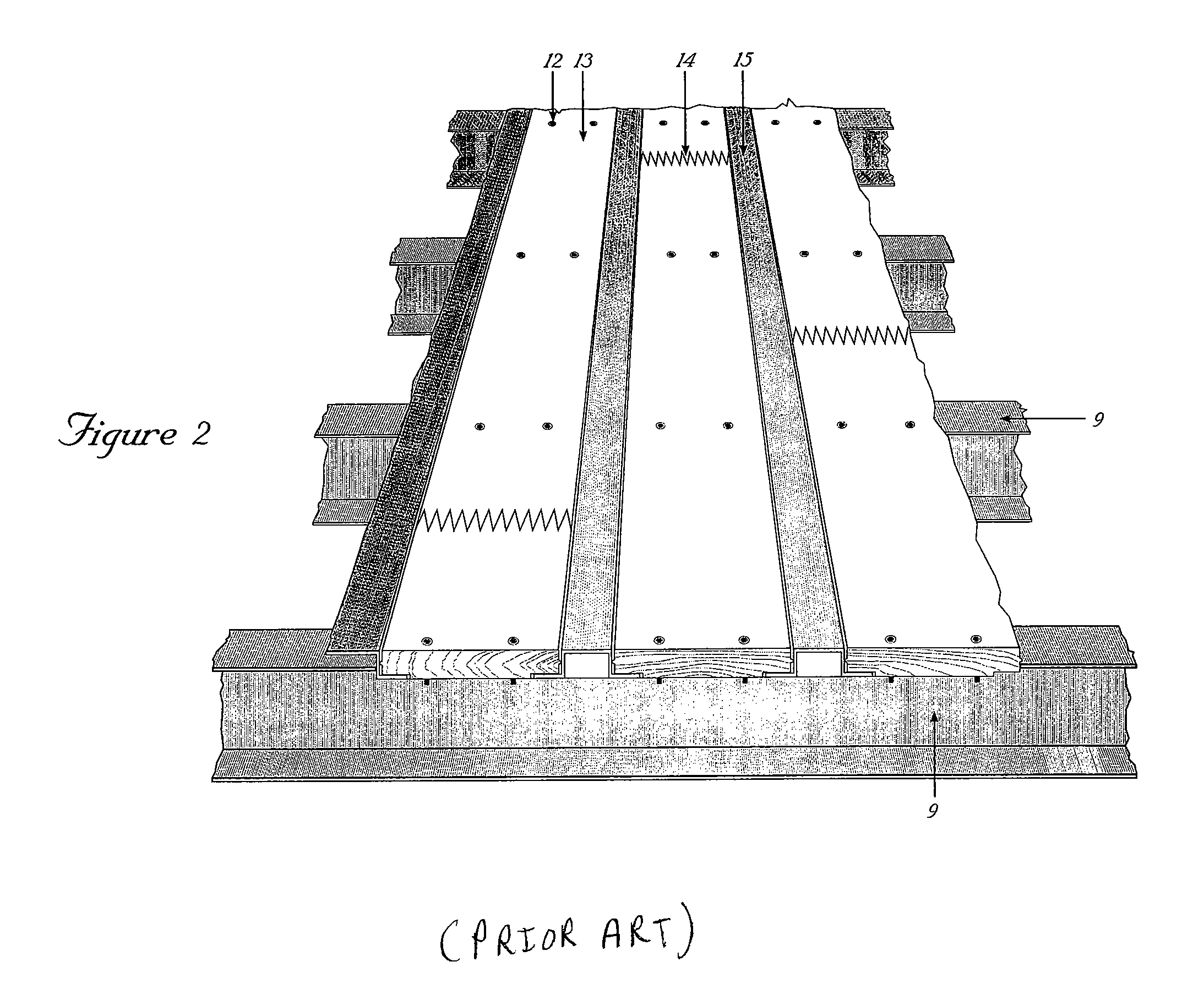Flexible composite lap joint for trailer flooring
a flexible, trailer flooring technology, applied in flooring, railway components, fastening means, etc., can solve the problems of less than the strength of the floorboard, the process is relatively slow, and the lateral side of the board cannot be protected in a conventional shiplap joint, so as to improve the flexibility, improve the moisture sealing ability, and improve the effect of strength
- Summary
- Abstract
- Description
- Claims
- Application Information
AI Technical Summary
Benefits of technology
Problems solved by technology
Method used
Image
Examples
Embodiment Construction
[0037]Various embodiments of the this disclosure are shown in FIGS. 6-11, attached hereto, wherein FIGS. 6 and 7 show a composite lip 20 at one edge of a board 22, which can be mated with bottom side edge 21 of an adjacent board 23. Composite lip 20 is fabricated with a planar layer of composite material that is also the underlayer 16 of composite board 22. Top layers 24 and 25 of the two adjacent boards have thicker edges 26 compared to the conventional shiplaps, which have half the thickness of the board. This makes the edges of boards stronger and resistant to fatigue loading. The composite layer 16 is a fiber reinforced polymer, wherein the polymer is a thermoset or a thermoplastic. Examples of thermoset polymers can be epoxy, phenolic, polyester, vinyl ester, polyurethane, etc. The fiber reinforcement can be one or more types of fibers, such as glass, carbon, graphite, aramid, polyethylene, etc. Additionally, the composite layer 16 may have high strength steel wires as reinforc...
PUM
| Property | Measurement | Unit |
|---|---|---|
| width | aaaaa | aaaaa |
| length | aaaaa | aaaaa |
| length | aaaaa | aaaaa |
Abstract
Description
Claims
Application Information
 Login to View More
Login to View More - R&D
- Intellectual Property
- Life Sciences
- Materials
- Tech Scout
- Unparalleled Data Quality
- Higher Quality Content
- 60% Fewer Hallucinations
Browse by: Latest US Patents, China's latest patents, Technical Efficacy Thesaurus, Application Domain, Technology Topic, Popular Technical Reports.
© 2025 PatSnap. All rights reserved.Legal|Privacy policy|Modern Slavery Act Transparency Statement|Sitemap|About US| Contact US: help@patsnap.com



